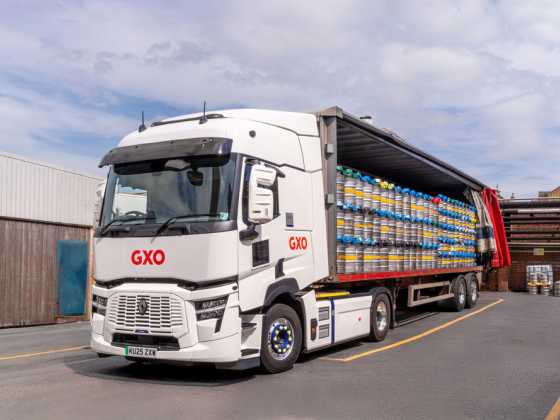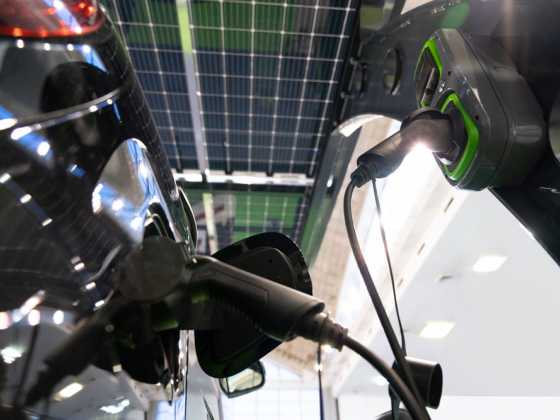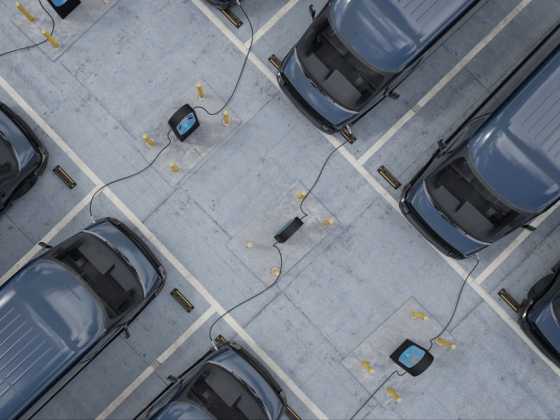Refuelling with natural gas

Natural gas from renewable sources enables HGV fleets to significantly reduce emissions. But what’s the refuelling network like? And what are the practicalities when filling up with Compressed Natural Gas (CNG)? John Leslie borrowed IVECO’s S-Way truck to find out
We are transitioning into a cleaner and greener world where emissions matter, with transport a key focus for global governments.
The electric revolution has already built momentum in the realm of passenger cars with more EV models than ever before hitting the road, and the same is happening for light commercial vehicles.
However, heavy goods vehicles represent more of a challenge when it comes to finding a zero-emissions solution due to the technological challenges of range and charging infrastructure for our essential haulage routes.
Manufacturers are hard at work developing the next generation of electric HGVs with some such as the Mercedes-Benz eActros and IVECO S-eWay offering class-leading range of up to 310 miles. Hydrogen is another solution for longer haulage operations, but infrastructure needs to be in place before such trucks become truly viable. So, what is a fleet manager to do? With increasing low emission zones in place today and businesses wanting to be more environmentally sympathetic, could CNG be in pole position? CNG, or Compressed Natural Gas, vehicles aren’t new, but their environmental credentials and rapidly expanding refuelling network are making them increasingly popular with operators. Running such a vehicle on renewable biomethane can dramatically reduce emissions.
IVECO has been an industry leader in CNG for over two decades and claims that its IVECO S-Way Natural Gas truck running on biomethane produces 95 per cent less CO2 than an equivalent diesel vehicle. It’s also quieter when entering urban spaces – welcome news for residents living near supermarkets – and can be maintained by the same network as IVECO’s diesel trucks.
Refuelling a CNG truck
What about refuelling? One of the biggest hurdles for alternative fuel vehicles today is the fuelling network, and in the case of EVs, how long it takes to charge. CNG might be the solution, so we’ve borrowed an IVECO S-Way Natural Gas to find out for ourselves. Those familiar with IVECO’s S-Way tractor unit would find it difficult to play spot the difference between a traditional diesel model and this CNG alternative. It has the same spacious cab, retains its stylish Italian bodywork, and produces a healthy 460hp and 2,000Nm of torque. IVECO’s aim is to provide a vehicle that can lower fleet emissions without compromising on the vehicle’s overall capabilities. In fact, the Italian marque recently announced a new IVECO S-Way Natural Gas truck capable of producing 500hp and featuring even greater fuel capacity for longer range.
A reassuringly steady journey through the UK’s recent stormy weather – complete with full-length trailer – revealed a pleasantly refined truck. The quiet nature of the CNG engine meant cab conversation needn’t require raised voices, and the truck itself made progress effortlessly.
Patrick Farbrace, IVECO’s business line director (Truck) said: “Natural Gas is an excellent way for a fleet to greatly reduce emissions. There are different paths to decarbonisation for operators, with no one size fits all solution. That’s why IVECO pioneers multiple alternative fuelled vehicles to ensure all missions are catered for. CNG is a cost-effective way to reduce emissions while retaining vehicle capability.”
The fuelling destination
Our refuelling destination was CNG Fuels in Avonmouth, a site that opened back in 2022 as the world’s largest biomethane refuelling station. In fact, it’s possible for the Avonmouth station to refuel up to 80 CNG vehicles per hour!
There is a growing network of 12 CNG Fuels stations in the UK supplying 100 per cent renewable biomethane – one of the greenest forms of natural gas.
What is biomethane? In short, it’s a natural byproduct of the breakdown of organic matter. Using something called an anaerobic digester, animal manure or food waste can be broken down to create biomethane. In fact, some CNG operators working within food waste or farming have their own digestors, creating an impressively efficient, cost-effective, and environmentally friendly circular economy to fuel their own fleets.
Filling the truck
The Avonmouth CNG Fuels site looks much like you’d expect somewhere HGVs refuel, with plenty of hardstanding and a series of pumps narrating the open space. These pumps provide two refuelling pressures via the choice of nozzles dependant on what your truck is equipped for. The smaller NGV1 is supported by the larger NGV2 for those trucks that support it. This IVECO S-Way with its eight 115 litre gas tanks was fitted with the optional NGV2 port for faster fuelling.
To start all you need is a CNG Fuels fob that’s connected to your account for payments. Simply scan the fob, enter the requested details and you can begin. No comical bio-hazard suits are needed with the whole experience feeling not too dissimilar to putting diesel into a regular truck. The pump hose neatly affixes to the IVECO with a clamp creating an air-tight connection, and then you are ready to push start. The fuel pump begins to whirr away, and around eight minutes later, the tanks are full. All you need to do is disconnect the hose and you’re free to hit the road again. It’s really that simple!
Cost considerations
Any savvy fleet manager has to think about costs, and the good news is that CNG is typically cheaper than diesel. Prices do fluctuate just like diesel, and the war in Ukraine did see gas prices spike along with other fuels, but anomalies aside, savings can be made when implementing CNG vehicles.
Such trucks do carry a price premium over their diesel counterparts, however, it is considerably less than the equivalent electric or hydrogen HGV. Factor in the cost savings CNG provides over diesel when entering the increasing number of low-emission zones, and the scales begin to tip in favour of gas.
As part of a £2 million fleet investment, UK logistics group Kinaxia Logistics recently took delivery of new IVECO S-Way
Natural Gas trucks with more to arrive through the year. These trucks will soon make up 10per cent of the company’s primary fleet of vehicles.
Richard Smith, group MD Primary, said in a recent release: “The addition of these vehicles is a significant step as we look to create a carbon net zero linehaul and trunking fleet for our customers. We trialled the trucks earlier in the year and the feedback was extremely positive. The units have a good specification, and the CNG fuelling network is expanding as more sites continue to come online.”
Decarbonisation in the transport industry will take many forms with some solutions working better for an application than others. Electric trucks could be the perfect fit for back-to-base operations where they are reliably charged and hit the road every day with 100 per cent battery, while hydrogen could be the future of long-haul missions. However, as a solution that can be implemented today, CNG appears to be a true environmental champion that allows operators to have their cake and eat it too.






